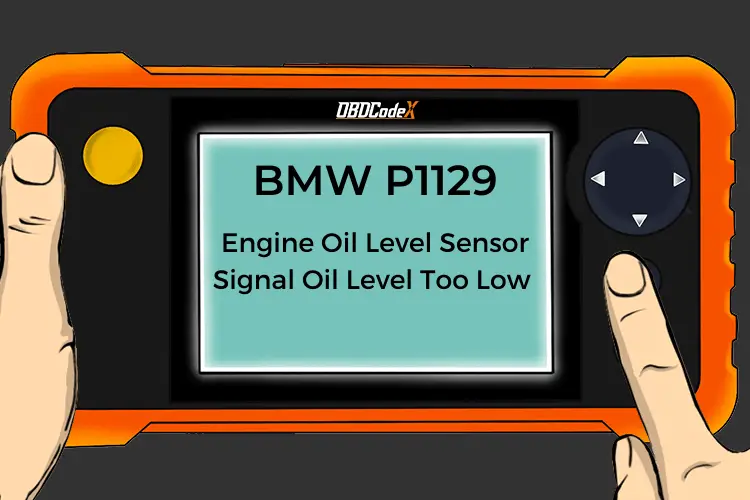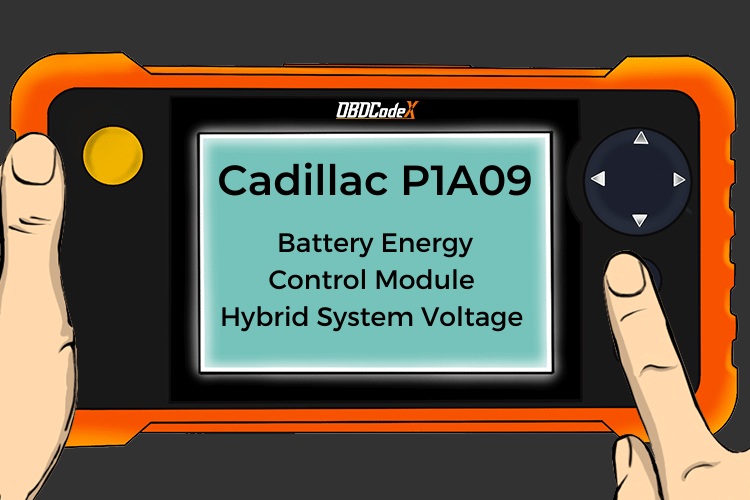P250E: Engine Oil Level Sensor Circuit Intermittent/Erratic
Is your scanner showing P250E?
No worries. We'll show you what it means and how to deal with it.
P250E: Engine Oil Level Sensor Circuit Intermittent/Erratic
OVERVIEWWhat Does The P250E Code Mean?
OBD-II trouble code P250E and related codes P250A, P250B, P250C, P250D, and P250F are associated with the engine oil level sensor circuit. This circuit is also known as the oil level safety circuit.
The purpose of the engine oil level sensor circuit is to monitor the engine oil level and oil pressure to ensure the internal engine components are receiving the appropriate amount of lubrication. The engine oil level sensor is mounted to or inside the engine oil pan in most circumstances and the exact location is vehicle specific. This process incorporates various components to accomplish based on the configuration of the oil supply system.
When the PCM detects an intermittent or erratic nonspecific voltage or resistance problem within the engine oil level sensor circuit, code P250E will be set and the check engine light, service engine soon light or both may be illuminated. In some circumstances, the PCM may shut the engine down to prevent internal engine component damage.
What Are The Symptoms Of The P250E Code?
Symptoms of a P250E trouble code may include:
- Engine may not start
- Low oil pressure gauge reading
- Service engine soon light illuminated
- Check engine light illuminated
What Are The Potential Causes Of The P250E Code?
Causes for this P250E code may include:
- Defective oil level sensor
- Dirty or clogged oil pressure sensor
- Low engine oil level
- Engine oil level too high
- Faulty or damaged wiring
- Corroded, damaged or loose connector
- Defective fuse or fuse-able link (If applicable)
- Defective PCM
How Serious Is This P250E Code?
The severity of this code is severe and requires immediate attention. Insufficient lubrication or oil pressure can cause permanent damage to internal engine components very rapidly.
How Can You Fix The P250E Code?
The first step in the troubleshooting process for any malfunction is to research the Technical Service Bulletins (TSB’s) for the specific vehicle by year, model and power plant. In some circumstances, this can save a lot of time in the long run by pointing you in the right direction.
The second step is to check the condition of the engine oil and confirm it is serviced to the appropriate level. Then locate all components associated with the engine oil level sensor circuit and look for obvious physical damage. Based on the specific vehicle, this circuit may incorporate several components including the oil pressure sensor, switches, fault indicators, an oil pressure gauge and the PCM. Perform a thorough visual inspection to check the associated wiring for obvious defects such as scraping, rubbing, bare wires, or burn spots.
Next is to check the connectors and connections for security, corrosion and damaged pins. This process must include all wiring connectors and connections to all components including the PCM. Consult the specific tech data for the vehicle to verify the configuration of the oil level safety circuit and see if a fuse or fuse-able link is incorporated into the circuit.
Advanced Steps
The advanced steps become very vehicle specific and require the appropriate advanced equipment to perform accurately. These procedures require a digital multi meter and the specific technical references for the vehicle. In this situation, an oil pressure gauge may facilitate the troubleshooting process.
Voltage Checks
The reference voltage and the acceptable ranges may vary based on the specific vehicle and the circuit configuration. Specific technical data will include troubleshooting charts and the appropriate sequence to follow assisting you with an accurate diagnosis.
If this process identifies the absence of a power source or ground, continuity testing may be required to check the integrity of the wiring, connectors and other components. Continuity tests should always be performed with the power removed from the circuit and the normal readings for wiring and connections should be 0 ohms of resistance. Resistance or no continuity is an indication of faulty wiring that is open or shorted and must be repaired or replaced.
A continuity test from the PCM to the frame will confirm the serviceability level of ground straps and ground wires. The presence of resistance is an indication of a loose connection or possible corrosion.
Recommended Parts
Below are some recommended auto parts to help you address the trouble code affecting your vehicle and get it running smoothly again:
>>> ACDelco Professional D8055 Engine Oil Level Sensor
>>> Twippo 372Pcs Waterproof Wire Connectors Kit
>>> KAIWEETS Digital Multimeter
>>> Engine Oil
>>> 12V Auto Waterproof Fuse Relay Box Block Kit
Note: During the purchasing process, please check carefully whether the part you want to buy fits your car!
Reference Sources
P250E Engine Oil Level Sensor Circuit Intermittent/Erratic, OBD-Codes.




